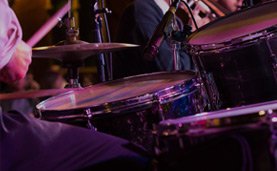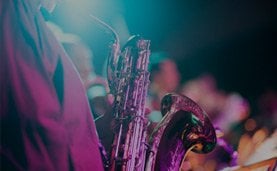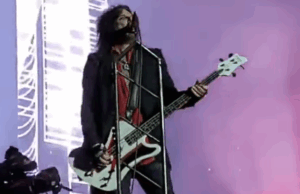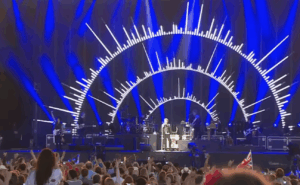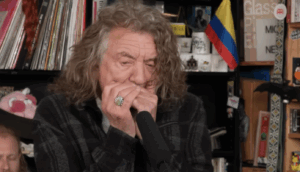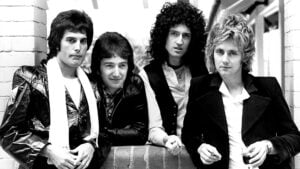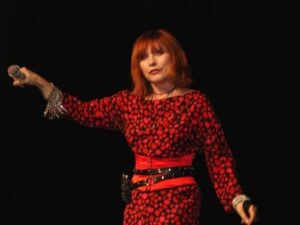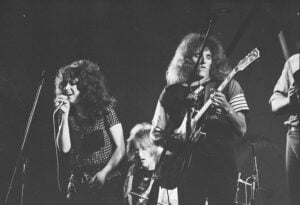Who Mattered Most in ‘80s Rock? This List Has Answers
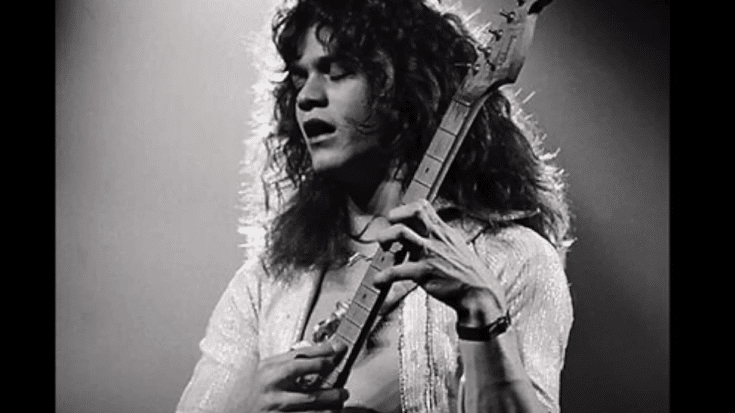
via Van Halen Backing, Isolated, and Live Tracks / YouTube
Who really ruled rock in the 1980s? We’re diving into the artists who dominated the airwaves, filled magazine covers, and lived rent-free in our heads throughout the decade. These weren’t just hitmakers—they were trendsetters, game-changers, and straight-up icons.
And no, it wasn’t always the lead singers stealing the spotlight. Some of the biggest rock legends of the ’80s were guitar gods, boundary-pushers, or wild personalities who brought something totally different to the table.
Ready to rewind the tape? Let’s look at the rockers who shaped the sound—and the style—of the 1980s.
Pat Benatar
Sure, the 1980s rock scene was mostly dominated by the guys—but let’s not forget the women who kicked down the door and made their voices heard. Leading that charge was none other than Pat Benatar. With powerhouse hits like “Hit Me With Your Best Shot,” “Love Is a Battlefield,” and “We Belong,” she wasn’t just making noise—she was making history.
Benatar racked up five platinum albums, 15 Top 40 singles, and four Grammy wins, all while bringing serious attitude and vocal fire to the stage. While icons like Stevie Nicks, Joan Jett, and Chrissie Hynde made major waves too, Benatar consistently owned the charts and radio throughout the whole decade.
Jon Bon Jovi (Bon Jovi)
Bon Jovi didn’t explode out of the gate, but once 1986 hit, they became unstoppable. Their third album, Slippery When Wet, changed everything. Packed with massive hits like “You Give Love a Bad Name,” “Livin’ on a Prayer,” and the cowboy-tinged “Wanted Dead or Alive,” the album catapulted the band to superstardom. And with Jon Bon Jovi front and center on MTV, their videos were impossible to miss.
Their rise helped usher glam and hair metal into the mainstream, opening the door for dozens of big-haired rockers to follow. Bon Jovi wasn’t just riding the wave—they were making it.
By 1988, they kept the fire going with their fourth album, New Jersey, which delivered five hit singles, including fan favorites “Bad Medicine” and “Born to Be My Baby.” That same year, they headlined Europe’s Monsters of Rock Festival, rocked the Moscow Music Peace Festival, and gave a stripped-down performance at the MTV VMAs that helped spark the idea for MTV Unplugged. In the ‘80s, Bon Jovi didn’t just make hits—they made moments.
Bono (U2)
If you’re looking for the ultimate ’80s rock success story, U2 fits the bill perfectly. They kicked off the decade with Boy in 1980—an album that got modest attention on college radio. But fast forward to the end of the ’80s, and U2 had become one of the biggest bands in the world. At the heart of it all was their frontman Bono, whose voice, passion, and activism helped shape their rise.
From the beginning, U2 stood out by tackling social and political issues in their songs. “Sunday Bloody Sunday” took on the troubles in Northern Ireland, while “Pride (In the Name of Love)” honored Martin Luther King Jr. Bono’s emotional delivery gave their music real weight, drawing fans in on a deeper level.
Their 1987 masterpiece The Joshua Tree launched them into superstardom with hits like “With or Without You,” “I Still Haven’t Found What I’m Looking For,” and “Where the Streets Have No Name.” The album earned two Grammys and powered a massive world tour, grossing $56 million globally.
They closed the decade with Rattle and Hum, mixing live and studio cuts with a hit concert film. Beyond the music, U2—especially Bono—backed causes like Band Aid, Live Aid, and famine relief in Ethiopia, blending rock stardom with real-world impact.
Phil Collins (Genesis and Solo Career)
Phil Collins might just be the hardest-working man in 1980s rock. He didn’t just stick to one lane—he juggled being Genesis’s frontman, a chart-topping solo artist, and even an occasional actor. The guy was everywhere, and somehow, he made it all look easy.
The decade kicked off with Collins leading Genesis into their most commercially successful era with albums like Duke and Abacab. Tracks like “Abacab” and “No Reply at All” gave the band their first big rock radio hits. But it was Collins’ solo debut, Face Value, and that haunting drum break in “In the Air Tonight” that turned him into a household name.
Throughout the ’80s, he bounced between solo success and Genesis, delivering massive hits like “Sussudio,” “Against All Odds,” “Take Me Home,” and “One More Night.” Genesis held their own with “Invisible Touch,” “Land of Confusion,” and “That’s All.” Every album went platinum, and No Jacket Required even hit Diamond status.
On top of all that, Collins played both the London and Philly stages of Live Aid, showed up in films like Buster, and collaborated with everyone from Philip Bailey to Eric Clapton. With six Grammys and endless radio play, there’s no denying it—Phil Collins ruled the ’80s.
Billy Idol
Billy Idol only dropped three albums in the ’80s, but that was more than enough to make him a rock icon. Before going solo, he fronted the punk band Generation X, but it was his snarl, leather, and bleached-blond look that helped him stand out once MTV hit the scene.
He was one of the first rockers to fully embrace music videos, and “Dancing With Myself” took off on MTV long before radio caught on. That early push launched a streak of hits like “White Wedding,” “Rebel Yell,” “Eyes Without a Face,” and “Flesh for Fantasy,” all powered by his mix of attitude and catchy hooks.
Idol’s remix album Vital Idol gave him another big win with his crowd-pleasing version of “Mony Mony.” From punk roots to pop culture stardom, Billy Idol owned the early ’80s with a sneer and a swagger.

John Mellencamp
John Mellencamp kicked off the ’80s still going by “John Cougar” and finding small success with songs like “Ain’t Even Done With the Night.” After a few albums that didn’t quite break through, many thought he’d stay on the sidelines. But then came 1982’s American Fool—an album that didn’t match the label’s vision but finally captured the heart of who Mellencamp really was. It delivered two massive hits: “Hurts So Good” and “Jack & Diane,” with the latter hitting No. 1 on the Billboard Hot 100. The album topped the charts and went on to sell over five million copies.
That record helped shape Mellencamp’s identity as the voice of small-town America. He followed it with a string of Top 10 platinum albums like Uh-Huh, Scarecrow, The Lonesome Jubilee, and Big Daddy, all filled with stories rooted in the American heartland.
In 1985, inspired by Live Aid, Mellencamp co-founded Farm Aid to help U.S. farmers during a financial crisis—a cause he’s continued to support ever since. Over the years, he’s racked up a Grammy win, 12 nominations, and inductions into both the Rock and Roll Hall of Fame and the Songwriters Hall of Fame.

Freddie Mercury (Queen)
As the 1980s kicked off, Queen was riding high as one of the biggest rock bands on the planet. Their 1980 album The Game kept the momentum going strong with chart-toppers like “Crazy Little Thing Called Love,” “Another One Bites the Dust,” and the title track. That same year, they also took a wild turn by scoring the soundtrack for Flash Gordon. While the movie didn’t do so hot at the box office, Queen still managed to turn “Flash” into a hit.
After that fiery start, the rest of Queen’s ’80s run was a bit uneven. While tracks like “Under Pressure” (with David Bowie) and “Radio Ga Ga” made waves, some of their later releases didn’t get the same love on the charts.
But if there’s one moment that locked Queen’s legacy in stone, it was their jaw-dropping performance at Live Aid in 1985. Freddie Mercury stole the show, leading the Wembley crowd with unmatched charisma and energy—many still call it the greatest live performance in rock history.
Even as the band’s spotlight dimmed toward the end of the decade, songs like “One Vision,” “A Kind of Magic,” and “I Want It All” reminded fans of Mercury’s powerhouse vocals and Queen’s lasting magic.

Tom Petty (Tom Petty and the Heartbreakers)
Tom Petty and the Heartbreakers entered the ’80s riding high off their Damn the Torpedoes success. With radio hits like “Refugee” and “Here Comes My Girl” still fresh, the band had no plans of slowing down. But before dropping their next album, Petty made headlines for something else—standing up to MCA Records. When the label wanted to raise the price of his upcoming album under a “superstar pricing” model, Petty flat-out refused. Eventually, MCA backed off, and Hard Promises hit shelves in 1981 with the fan-favorite “The Waiting” leading the way.
Throughout the decade, the Heartbreakers kept the hits coming with songs like “You Got Lucky,” “Change of Heart,” “Rebels,” “Jammin’ Me,” and the trippy “Don’t Come Around Here No More.”
Later in the ’80s, Petty explored new sounds with The Traveling Wilburys, a supergroup that included George Harrison, Bob Dylan, Jeff Lynne, and Roy Orbison. Their debut was a hit, especially “Handle With Care” and “End of the Line.”
He closed the decade strong with his Full Moon Fever solo album, produced by Lynne and featuring Mike Campbell. It gave us classics like “I Won’t Back Down,” “Runnin’ Down a Dream,” and the timeless “Free Fallin’.”

Prince
Prince kicked off the ’80s making waves on the pop and R&B charts, but by the time Purple Rain hit in 1984, he proved he could rock with the best of them. The album—and the movie—turned him into a global icon and showed off his guitar chops, songwriting genius, and flair for the dramatic.
Throughout the decade, Prince blurred genre lines and dropped one iconic track after another. Songs like “Let’s Go Crazy,” “1999,” “Purple Rain,” “When Doves Cry,” “Kiss,” and “Sign o’ the Times” were packed with energy, attitude, and innovation.
He didn’t just shine on his own records either. Prince wrote hits for others under pseudonyms—like The Bangles’ “Manic Monday,” Sheena Easton’s “Sugar Walls,” and Chaka Khan’s “I Feel for You.” And who could forget Sinead O’Connor’s heart-wrenching take on “Nothing Compares 2 U,” which Prince originally wrote?
Prince also composed the soundtracks for Under the Cherry Moon and 1989’s Batman, adding even more layers to his legacy. In the ’80s alone, he picked up four Grammy wins out of 12 nominations, including one for Best Rock Performance for “Purple Rain.”
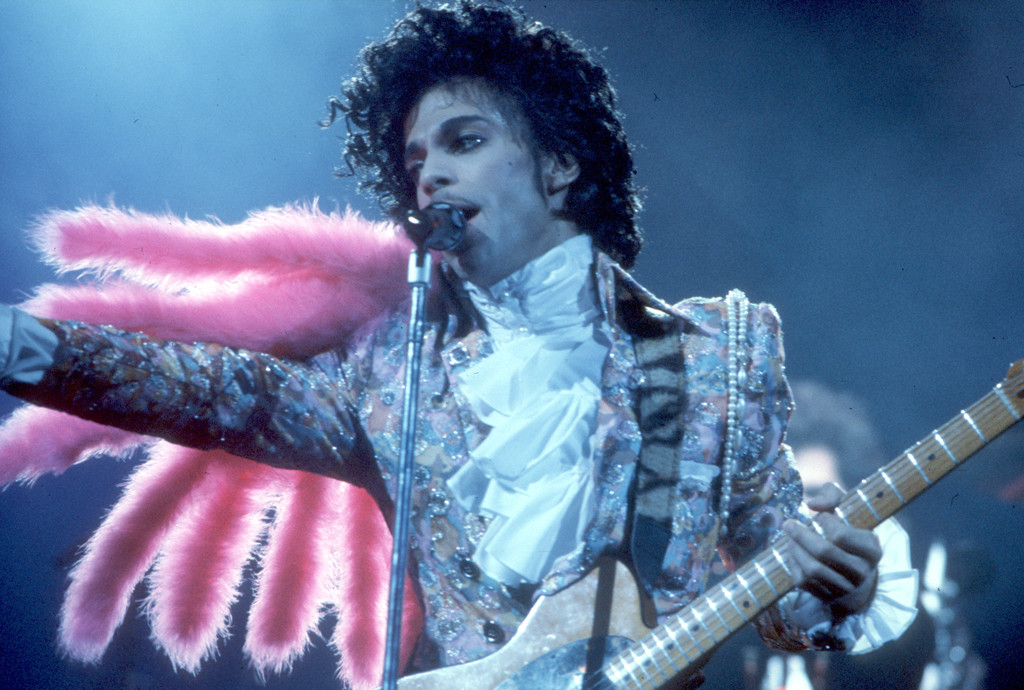
Axl Rose (Guns N’ Roses)
Guns N’ Roses didn’t exactly explode out of the gate in 1987—but once MTV aired “Welcome to the Jungle,” everything changed. That raw energy, Axl Rose’s gritty voice, and the band’s rough-edged sound cut through the glam rock haze that was everywhere at the time. They weren’t polished—they were dangerous, and people loved it.
“Welcome to the Jungle,” “Sweet Child O’ Mine,” and “Paradise City” dominated radio and turned them from Hollywood newcomers into the biggest band in rock. Axl, with his wild presence and unpredictable attitude, became the face of it all—both celebrated and criticized.
Their bad-boy rep grew fast. In 1987, Axl was detained after clashing with security, and the band had to finish a show with a roadie on vocals. The controversy around “One in a Million,” with its offensive lyrics, stirred even more backlash.
Still, Axl wasn’t afraid to draw a line—he once warned the band would break up if a member didn’t kick a growing heroin problem. By decade’s end, he was dating Erin Everly (Don Everly’s daughter), who inspired “Sweet Child O’ Mine.” Their relationship later turned rocky, but by then, Axl Rose had already become the most talked-about name in rock.

Nikki Sixx (Motley Crue)
You can’t talk about ‘80s rock without bringing up Mötley Crüe—and while Vince Neil and Tommy Lee definitely made their mark, it was Nikki Sixx who really drove the band’s vision. As the group’s founder and primary songwriter, Sixx helped shape the wild, loud, and rebellious image that came to define the decade’s hard rock scene.
Mötley Crüe’s rise mirrored the genre’s explosion. They kicked things off with Too Fast for Love in 1981, which led to a deal with Elektra Records. From there, they blasted into the mainstream with Shout at the Devil, and then kept climbing with Theatre of Pain, Girls, Girls, Girls, and Dr. Feelgood. Songs like “Smokin’ in the Boys Room,” “Home Sweet Home,” and “Kickstart My Heart” became essential ‘80s rock anthems.
Off stage, their lifestyle was just as intense. Sixx and Lee, nicknamed the “Terror Twins,” were infamous for their wild antics. But it wasn’t all fun—Sixx’s heroin addiction nearly killed him. In 1987, he was declared clinically dead for two minutes before being revived.
Eventually, he chose sobriety. But during the ‘80s, Nikki Sixx lived fast, wrote loud, and helped make Mötley Crüe one of the era’s most unforgettable bands.
![]()
Bruce Springsteen
Bruce Springsteen kicked off the ’80s as a critics’ favorite, but not quite a chart-topping superstar—at least not yet. That all changed with The River in 1980, featuring his first big radio smash, “Hungry Heart.” Things took a quieter turn with Nebraska in 1982, a dark, stripped-down album that hit No. 3 but didn’t chase hit singles.
Then came Born in the U.S.A. in 1984, and everything exploded. The album launched seven hit singles, turned Springsteen into an MTV icon thanks to the “Dancing in the Dark” video, and became his biggest success—going Diamond with over 17 million U.S. sales.
During the whirlwind of that era, Springsteen married actress Julianne Phillips and brought Patti Scialfa into the E Street Band. But the intense touring took its toll, and his marriage to Phillips ended in divorce by 1988. As that chapter closed, his bond with Scialfa grew and eventually turned romantic.
He poured his heartbreak and reflection into 1987’s Tunnel of Love, featuring hits like “Brilliant Disguise” and “One Step Up.”
Springsteen also found his political voice in the ’80s. He joined the “We Are the World” project, led a major Amnesty International tour, and played East Berlin in a concert that inspired change.
By decade’s end, The Boss was a Grammy winner, an arena-packing powerhouse, and a global voice for change.

Sting (The Police)
Sting kicked off the ’80s leading The Police, one of rock’s most exciting new bands, and closed out the decade as a solo superstar and budding actor. Early in the decade, The Police dropped Zenyatta Mondatta with standouts like “Don’t Stand So Close to Me” and “De Do Do Do De Da Da Da.” Their success climbed even higher with 1981’s Ghost in the Machine, thanks to hits like “Every Little Thing She Does Is Magic” and “Spirits in the Material World.”
But it was 1983’s Synchronicity that turned them into global icons, with massive hits like “Every Breath You Take,” “King of Pain,” and “Wrapped Around Your Finger.” Despite the acclaim and five Grammy wins, tensions within the band led to a split after a 1986 greatest hits release.
Sting’s solo debut The Dream of the Blue Turtles in 1985 took a jazz-inspired turn and earned him more Grammy love. He followed it up with …Nothing Like the Sun in 1987, churning out solo hits like “If You Love Somebody Set Them Free” and “Be Still My Beating Heart.”
Outside music, Sting hit the big screen in Dune, The Bride, and The Adventures of Baron Munchausen. He also raised his voice for causes, performing at Live Aid, joining Band Aid, touring with Amnesty International, and founding the Rainforest Foundation. The ’80s belonged to Sting—on stage, on screen, and on a mission.
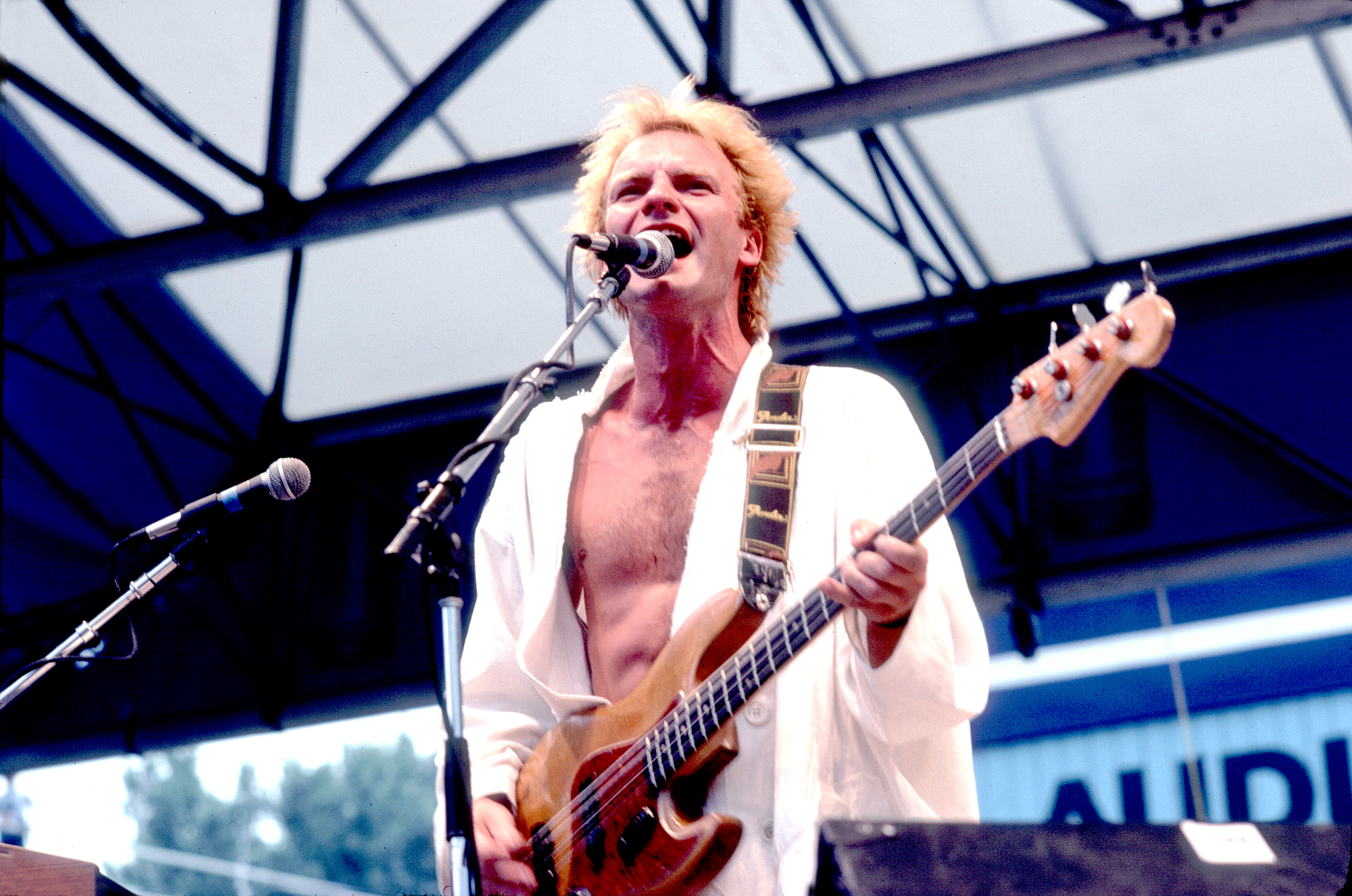
Eddie Van Halen (Van Halen)
It’s not often the guitar player outshines the lead singer, but that’s exactly what happened with Van Halen in the ’80s. Despite having two energetic frontmen—David Lee Roth and Sammy Hagar—it was Eddie Van Halen who stole the show. His lightning-fast solos, groundbreaking guitar techniques, and wild stage presence made him the face of the band, landing him on the covers of countless music magazines.
Van Halen dropped four albums with Roth in the early ’80s, building momentum with tracks like “And the Cradle Will Rock,” “Unchained,” and their cover of “Dancing in the Street.” Then came 1984, and everything exploded. “Jump,” featuring Eddie’s keyboard magic, became a massive crossover hit, while “Panama,” “Hot for Teacher,” and “I’ll Wait” turned the band into MTV staples. But Roth eventually split, opening the door for Sammy Hagar.
With Hagar at the mic, Van Halen didn’t miss a step. Albums like 5150 and OU812 kept the hits coming—“Why Can’t This Be Love,” “Dreams,” and “Finish What Ya Started” showed the band evolving, with Eddie putting more focus on melody and keyboards.
Outside of music, Eddie also made headlines when he married One Day at a Time actress Valerie Bertinelli in 1981—making them one of the era’s hottest celebrity couples.

Angus Young (AC/DC)
Sure, Brian Johnson deserves plenty of credit for helping AC/DC kick off a new era—but let’s be honest, the real face of the band in the ’80s was Angus Young. Decked out in his signature schoolboy uniform and armed with a Gibson SG, Angus didn’t just play lead guitar—he was the energy of the band.
When Bon Scott tragically passed away in 1980, Angus helped steer the group through the transition. That same year, AC/DC dropped Back in Black, a tribute to Scott and a monster hit that’s now gone 27 times platinum in the U.S. alone. The album gave us timeless rock staples like “You Shook Me All Night Long,” “Hells Bells,” “Back in Black,” and “Rock and Roll Ain’t Noise Pollution.”
The rest of the ’80s was a bit of a rollercoaster commercially, but AC/DC still churned out crowd-pleasers like “For Those About to Rock,” “Let’s Get It Up,” “Who Made Who,” and “Heatseeker.” Even if the charts cooled a bit, the band’s live shows never did.
With his duck walk and electrifying solos, Angus Young became one of the most iconic guitarists of the decade—and AC/DC’s not-so-secret weapon on stage.




